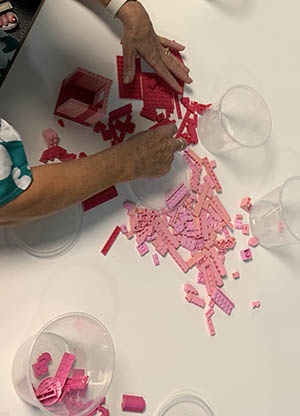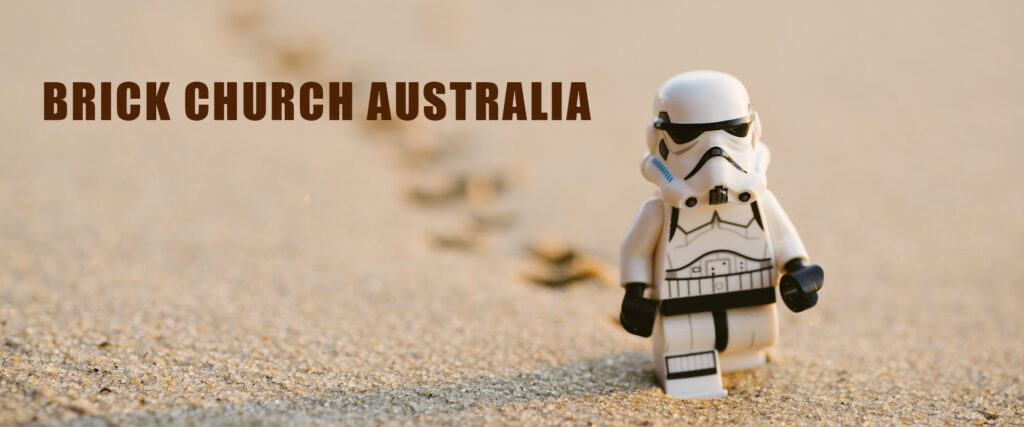Yesterday I ran the first of two workshops for a small church community on what a monthly Brick Church [aka “Lego” TM] might look like. The background to this is that I have an interest in doing Brick Church and have previously run an activity-based faith community called Alive@5 at Rosefield Uniting Church in Adelaide. I’m also hosting a Facebook Group called Brick Church Australia here. For those who don’t know, there are churches and church schools around the world playing with Lego as part of worship or faith development.
Why Brick Church? In many ways, for the similar reasons to Messy Church (though my approach differs).
- active, multi-sensory, multiple intelligence learning
- missional focus beyond an existing congregation or faith community
- intergenerational
- cultural engagement [Lego is very popular as a hobby]
 STEP 1 – My aim for the planning session (for about a dozen people from younger primary age children to retired adult] was to include some experiential stuff (though we ran out of time – of course!]
STEP 1 – My aim for the planning session (for about a dozen people from younger primary age children to retired adult] was to include some experiential stuff (though we ran out of time – of course!]
- Welcome people to Brick Church
- Introduce a theme of Gratitude
- Teach a simple song
- Engage in a prayer activity about Gratitude – there were tables around the room, each with Lego of different colours.
– Close your eyes and reflect on what you are thankful for this week
– Think of a colour that you associate with being thankful today
– Choose a table with Lego of that colour (or similar)
– Make something that represents your gratitude or thankfulness today [5 minutes]
– Return and share what you have made if you wish
– Say a prayer of thanks together
We then reflected together on what we had experienced in the activity.
STEP 2 – We talked together about hopes for the venture, why Lego?, and what might be some differences between a Lego Club and Lego Church – all useful conversation.
STEP 3 – I compared two different approached to ‘activity-based’ church and offered a possible outline for a regular gathering.
Messy Church
- Begin with prescriptive activitiies to illustrate or teach the meaning of a Bible text or them
- Finishes with worship and presenting the Biblical text
Alive@5 (our Rosefield initiative)
- Tell/share the Bible story as a compelling experience
- Activities come AFTER the story as a response to and exploration of the text
- Activities are open-ended invite imagination. They are not prescriptive.
The critical issues here are both theological and educational
- The text is treated as having many meanings (multivalent) which will differ depending on how the Spirit speaks to people at particular times [and we don’t need to cover all possible meanings OR provide a limited range of meanings. I find some of the Messy Church treatments of Scripture to be too conservative or childish.]
- We encounter the Word before we respond to the Word, not vice versa
- The best ways to evoke and explore faith are not through simple illustration or analogy but through imagination
- The best ways to use art in learning are open-ended, expressive and exploratory, not prescriptive [unless you are teaching art skills]
All of the above are features of seeing narrative and imagination as fundamental in faith formation.
Alive@5 Format (about 75 mins)
-
- Gathering activity as people arrive
- Welcome & Theme Intro
- Song
- Giving Thanks + Prayer
- Bible Story + brief reflection
- Activities (20 mins) – usually a choice of 4-5
- Sharing what we’ve made/done (not always)
- Prayer for others (not always – as time allows)
- Song (same every month)
- Blessing – we say to one another
 There is a similar approach in – Building Faith Brick by Brick (2 volumes) by Emily Slichter Given. The introductory material in the book is excellent. She uses “I wonder” prompts however I find that they don’t explore the narrative enough and jump too quickly to application. The point here is that a Godly Play – type series of “I wonder” prompts is an excellent way to follow the biblical narrative and transition towards the open-ended Lego response activity.
There is a similar approach in – Building Faith Brick by Brick (2 volumes) by Emily Slichter Given. The introductory material in the book is excellent. She uses “I wonder” prompts however I find that they don’t explore the narrative enough and jump too quickly to application. The point here is that a Godly Play – type series of “I wonder” prompts is an excellent way to follow the biblical narrative and transition towards the open-ended Lego response activity.
STEP 4 – Back to our Brick Church example theme of Gratitude
Bible Story – Luke 17:11-19 – EXAMPLE using Lumo Videoto tell the story.
Questions
- Imagine that you are the character in the story. Imagine that Jesus has healed you.
- How might you feel?
- What might want to say to him?
- What might you want to do?
- What part of this story sticks in your mind?
- Has there been a time when someone showed you kindness or compassion and you felt gratitude?
Invite people to make something that represents that is important for you about that story. (It might be a picture from the story or it might be a symbol of how you feel or something else – you de)
You can choose whether you want to work by yourself or whether you want to sit with someone else.
Lego Activity at tables [20 minutes] – Imagine that you are the character in the story. Imagine that Jesus has healed you.
- How might you feel?
- What might want to say to him?
- What might you want to do?
- What part of this story sticks in your mind?
We also talked about providing a creative alternative to Lego as an option each month, and also how to provide for pre-school children (eg. Duplo. a semi-separate space, place some safety issues like swallowing Lego….).
When we meet in two weeks time we’ll be looking at what kind of approach the team want to take, how they might choose themes and organise themselves, along with further clarifying their core values and initial goals,
Click on the image below to visit the Facebook group.

